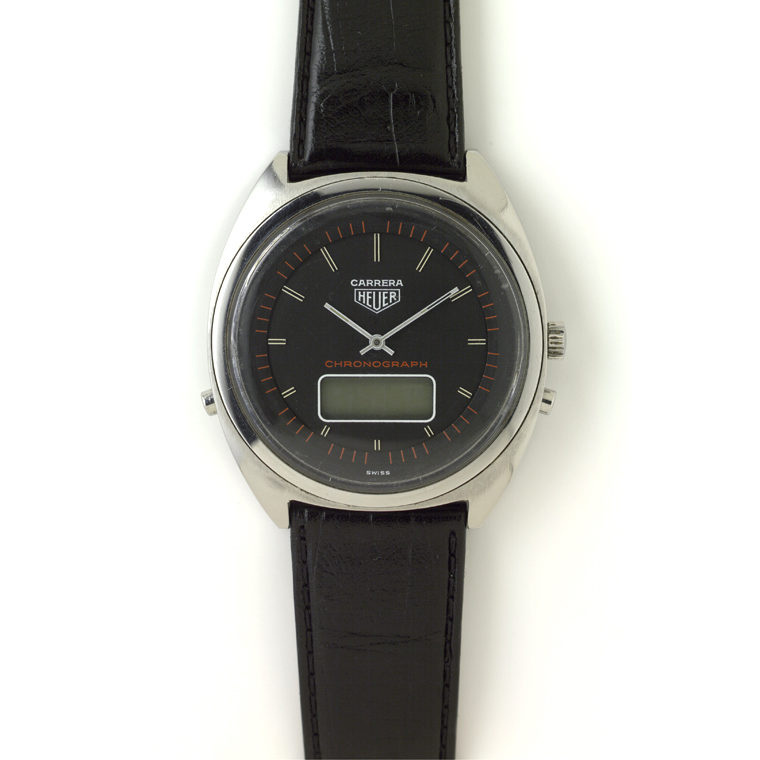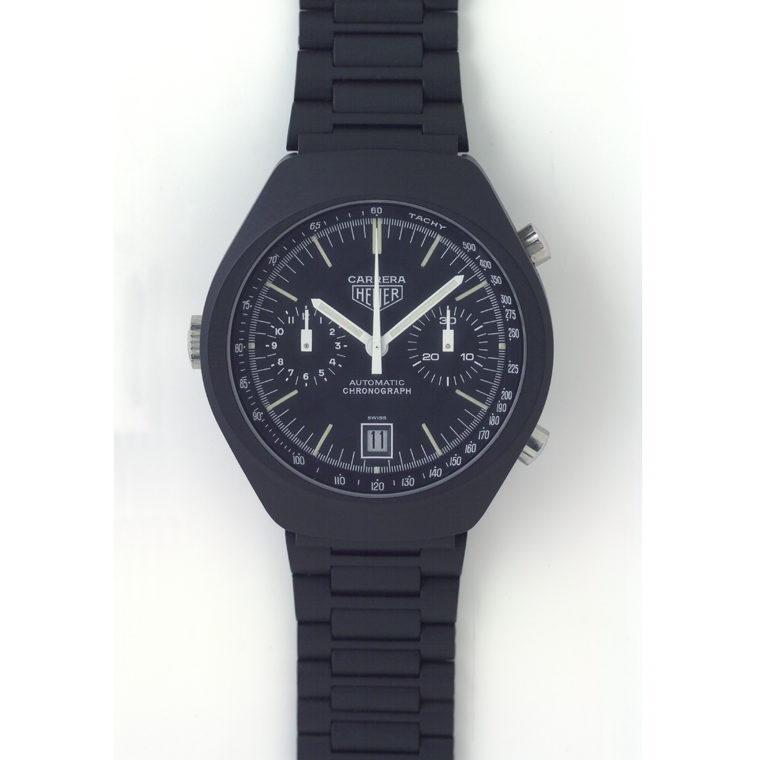

50 years of Carrera - Interview with Jeff Stein from OnTheDash
1963: Jack Heuer created the Carrera. Mythical, adored by automobile racing drivers and collectors, the Heuer Carrera chronograph embodies the tradition of the post war period neo-modernism.
For the 50th anniversary of this icon, we met with Jeff Stein, the vintage Heuer and TAG Heuer expert.
In industrial design, some objects pass through time without appearing to have been created several decades ago. Often, when we search the CV of the designers of what some people call the “modern classic”, we discover a deep reflection on the needs of the end user and a revolutionary, even singular, approach to the use of materials. Similar to Charles Eames and Harry Bertoia, who have revolutionized the chair design by adapting to different types of foundations, Jack Heuer has crystallized the codes of the modern chronograph by focusing on the basic needs of racing drivers.
Exclusive Interview: Jeff Stein, the bible of Carrera
All TAG Heuer collectors know about your site. Who are you?
I am a lawyer living in Atlanta, Georgia. I have always been a fan of vintage cars, especially the race and rally cars of the 1960s and 1970s. Around 15 years ago, I was at a vintage car weekend in Monterey, California, and saw a pair of Heuer Rally Master dashboard timers, as well as a vintage Heuer Monaco. I began collecting the dashboard timers immediately, the chronographs soon followed, then I created the OnTheDash website in 2003, primarily to display the dashboard timers. I have been focusing on the chronographs in recent years, primarily the vintage Heuers chronographs, but also a handful of other brands. Operating the OnTheDash website has been a very satisfying hobby, especially as the strong sense of community has developed.
In the 50s and 60s, there were plenty of chronographs with two or three counters using a Valjoux movement, how was the Heuer Carrera so different?
The distinctive feature of the early Carreras was removal of all the non-essential elements. There is an saying that a true sports car should not have any elements or accessories that do not make it go fast, and it is the same with the Carrera. Jack Heuer designed the Carrera so that every element improved the usefulness and legibility for the wearer, with a special focus on racers and rally drivers. We see the clean, open dial, the relatively large pushers and crown, and the use of the tension ring that has hash marks for the seconds and minutes. Of course, when we look back at 50 years of the Carreras, we also see that the distinctive shape of the case and especially the lugs has aged very well.

The Carrera was released in 1963, but for you which was the most revolutionary model ?
Among the vintage Heuer Carreras, I would point out three models -- after the first Carrera -- which were revolutionary. First on the list is the Carrera 45 Dato, introduced in 1966. We take it for granted now, that a chronograph should have a date window, but this Carrera was the first chronograph to use a window to display the date; previously, the triple calendar chronographs used a hand to show the date. The second revolutionary Carrera must be the automatic models powered by the Caliber 11 (Chronomatic) movements. These were the first automatic chronographs, and were very important to Heuer throughout the 1970s. Finally, even though they may be ignored by some of today’s collectors, the quartz powered Carreras from the late 1970s were definitely revolutionary, some incorporating LCD panels.


What is the appeal of vintage Carreras to today’s collectors?
Ninety percent of the 1960s and 1970s Heuers in the market are one of three models: Autavia, Carrera and Monaco. The Monaco is the boldest design, and appeals to many collectors, but this design is definitely not for everyone. There are many models of the Autavia, but they all have the rotating bezel and tend to be large; they are tool watches, with a tool look. The Carrera offers the greatest variety of sizes, shapes, looks, finishes (steel, gold and gold-plated) and even movements, with over 100 models produced during the first 20 years. Today’s collector has the choice ranging from an elegant 18 karat gold model from the early 1960s to the military style from the 1970s, in black PVD. And, of course, the Carrera still has the name that evokes racing, while sounding beautiful to the ear.

As someone who collects Carreras from the 1960s and 70s, what are your reactions to the Carreras that TAG Heuer has offered in recent years and has introduced in 2013?
To my eye, the very first Calibre 1887 Carrera, offered in 2010, was a brilliant modern version of the Carrera. This Carrera had the same basic geometry and aesthetics as the original 1963 Carrera, in a size that appeals to today’s customers and also house the new Calibre 1887 movement. In the models introduced in 2013, we see the Carrera moving to new colors (represented by the midnight blue), new materials (as shown by the black carbon model), and even the entirely new bull-head configuration. In 1963, Jack Heuer offered a watch that would meet the practical needs of a racer, in a style that would be timeless. I believe that TAG Heuer is achieving these same objectives in its current Carreras.

Click to read the second part of the interview of Jeff Stein.
For more information on the extensive world of the Heuer Carreras :









